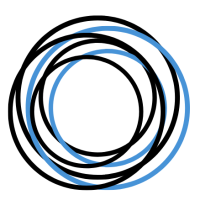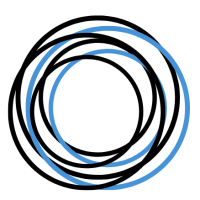
When I entered full time clinical work back in 1988, I entered the primary SUD (vs primary MH) side of a relatively large community agency with dozens of units and specialty programs spread across the city, and a dedication to innovative services.
One of those innovative programs was a 24/7/365 mobile crisis intervention program called the “Emergency Response Service”. It opened there decades ago as one of the first of its kind in a national demonstration project and is still in operation. That program had master’s level MH clinicians that were also deputized, and had specially equipped cars and police radios (but no handcuffs). They respond to psychiatric emergencies. Calls for help come from individuals or families in the community, and they can also be dispatched directly by the local police department. When ERS clinicians arrive, the police often stay if and as needed and let ERS take the lead, or other times simply leave. ERS clinicians regularly attend police shift change meetings. The police and ERS have worked in a partnership in that city for decades.
My clinical work was on the SUD side of the organization. After my first year in a Minnesota Model residential 28-day primary SUD program, my work moved elsewhere in that agency, to a 1-year residential program that was a traditional therapeutic community (TC). It shared a staff and physical plant with a methadone maintenance (MMT) program. I learned both models, worked in the TC for 7 years and in that time learned a lot about methadone maintenance – after all, the building and staffs of the two programs were shared. After that first 7 years I worked both the TC and MMT programs simultaneously another 12 years.
- Early on in my experience we were exposed to Motivational Interviewing when it was relatively new. We adopted it in our methadone maintenance program and in our TC, which was no small change. Confrontation started to change dramatically and eventually went away. MI and MET became our operating system.
- Later we added a nursery component with space for infants up to age 12 months to live with their mothers during residential treatment.
- We were exposed to and adopted gender specific programming when that became best practice.
- Later, CSAT sent out an RFP for a Federal demonstration grant for enhancements of existing pregnant/post-partum parenting women’s residential SUD programs. We were funded1 for expansion of our in-house services and went up to a dozen children up to age 4, built on a new wing to the building, and added a dedicated nursery staff, and more. That grant included special competencies in gender-specific and culturally relevant care.
- Later, we were exposed to the Consumer-Centered model when it was unheard of in primary SUD services, and adopted that – another huge paradigm shift and set of changes.
- Later we were exposed to Consumer-Driven models and related clinical practices and adopted that approach over Person-Centered methods. By then our residential TC model and clinical practices had changed dramatically.
Later yet, our organization became a living laboratory for the Behavioral Health Recovery Management (BHRM) project2. Recovery Orientation (e.g. “study recovery and have that inform treatment”) was a revolutionary set of changes to say the least. Eventually, the BHRM principles were codified. We led further changes across our entire organization by innovating deliberately within our existing clinical models (consumer-driven, gender-specific, and specific best practices within each service) according to the BHRM principles. These resulting changes were specific and vast. Meanwhile, the leadership’s dedication to adopting best clinical practices, sustained fidelity to those practices, and best principles and practices for leading and guiding organizational change was paramount and sustained for many years.
Along the way, looking out the back windshield so to speak, I noticed treatment models I was originally trained in (and that we replaced) were later derided. And later yet, the replacement models were themselves replaced and derided. I saw this continue to happen. New models of thinking and practice would be adopted and the existing practices (once revolutionary, challenging, new, and best) would later be derided. I noticed derision seemed most sharp for those practices that were further away in time. And I noticed sharper derision was likely to be from those that never experienced the older practices they were criticizing, and certainly never as a breath of fresh air when those innovations first arrived.
Lately, I notice what to me seems another new shift. This change is in the field overall. To me it seems to be one shift with three aspects: being, purpose, and knowledge.
I’ll outline the shift by breaking down those three aspects in the form of first-person statements.
A. “I don’t need a person with letters, or recovery, or their own story, to tell me who I am.” (ontology; being)
B. “I don’t need a person with letters, or recovery, or their own story, to tell me what to do.” (teleology; purpose)
C. “I don’t need a person with letters, or recovery, or their own story, to understand me.” (epistemology; knowledge)
I wrote those in a more pointed way with a certain degree of emphatic clarity just to promote their consideration. Interestingly, those three points of emphasis seem to correspond with 3 aspects of our field. I’ve built a continuum from older (on the left) to newer (on the right) for each.
It seems we now have the following:
Recovery……………………………………..Liberation
- Who I Am (e.g. person with SUD)
- You tell me………………………………..I tell you
- Who you are (e.g. other person in the room)
- You tell me………………………………..I tell you
Abstinence…………………………Harm Reduction
- What to do (e.g. person with SUD)
- You tell me………………………………..I tell you
- What to do (e.g. other person in the room)
- You tell me………………………………..I tell you
Treatment……………………………….Peer Support
And we eliminate knowing and the attachment to knowing (e.g. the mutual sharing of knowing and what is known). For either or both persons, “knowing” will not be stable and will flow. At times, knowing may seem to emerge, to disappear, or a void in knowing may manifest. Regardless, all knowing is viewed with skepticism and held lightly because “knowing” shifts.
This is interesting to me, as I remember when “Traditional Model” was all there was, and “Recovery Model” (on 16 dimensions) was the new and revolutionary point of contrast. What I am framing here might be old-hat to some, and shockingly new to others. I’d like to emphasize the relatively profound set of changes it holds and opportunity it represents.
1Godley, S., Funk, R., Dennis, M., Oberg, D. & Passetti, L. (2004). Predicting Response to Substance Abuse Treatment Among Pregnant and Postpartum Women. Evaluation and Program Planning. 27: 223-231.
2Kelly, J. F. & White, W. L. (eds.). (2011). Addiction Recovery Management: Theory, Research and Practice. Springer: New York.
